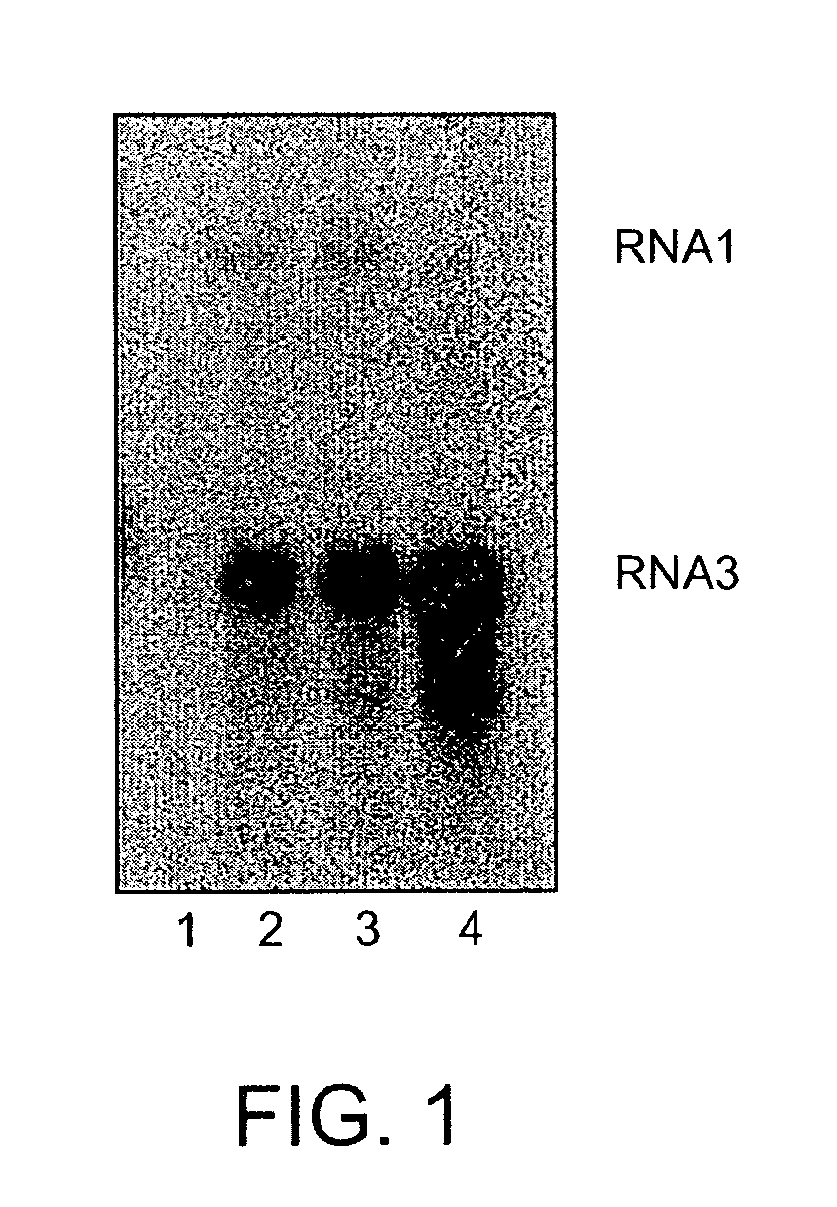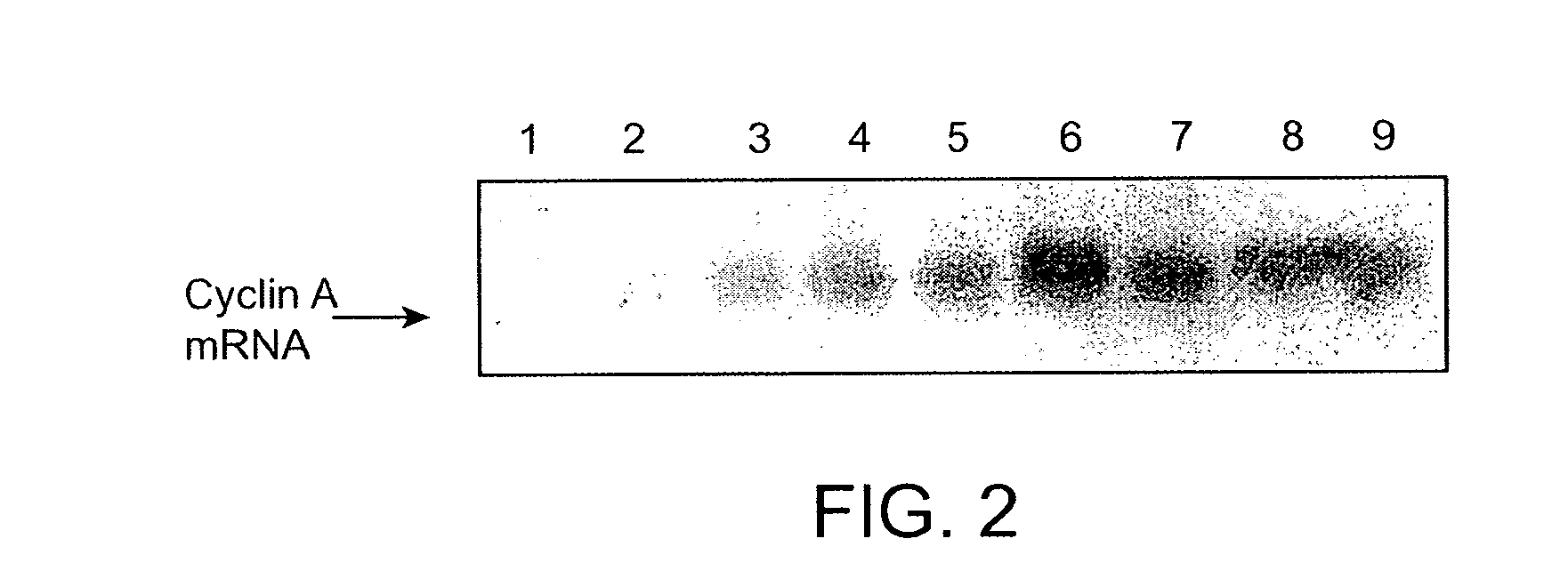Small molecule inhibitors of RNA silencing
a small molecule inhibitor and rna silencing technology, applied in the field of small molecule inhibitors of rna silencing, can solve the problems of limited selectivity, human toxicity, environmental damage, chemical insecticide use, etc., and achieve the effect of inhibiting rna silencing mediated viral immunity
- Summary
- Abstract
- Description
- Claims
- Application Information
AI Technical Summary
Problems solved by technology
Method used
Image
Examples
example 1
Screening Protocol
[0166]A cell-based high throughput screening protocol for the identification of chemical inhibitors of the RNAi-mediated innate immunity against virus infection in cultured Drosophila cells has been established. The system is based on Flock house virus (FHV), an animal Nodavirus that contains a bipartite RNA genome. FHV RNA2 encodes the single virion structural protein, whereas FHV RNA1 encodes the viral RNA-dependent RNA polymerase (RdRP) and B2, a viral suppressor of RNAi (VSR) expressed after RNA1 replication from its own mRNA, RNA3. In the absence of RNA2, RNA1 replicates autonomously, accumulates to high levels, and produces abundant RNA3 in Drosophila cells. However, a mutant of RNA1 that does not express B2, called R1ΔB2, accumulates to detectable levels only in Drosophila cells that are defective for RNAi, but not in wild type cells due to degradation of viral RNAs by antiviral RNAi. Similarly, green fluorescence is not detectable in wild type Drosophila ce...
example 2
Inhibition of RNAi Mediated Viral Immunity
[0167]Compounds 3-(2-methyl-1H-benzimidazol-1-yl0-1-(3-methlphenyl)-2,5-pyrrolidinedione (Rin1), 1-[3-(benzyloxy)-4-methoxybenzyl]-4-[(4-methylphenyl)sulfony]piperazine (Rin2), and 1-(3-chloro-4-methylphenyl)-4-[4-(diethylamino)-2-hydroxybenzylidene]-3,5-pyrazolidinedione (Rin3) were found to inhibit the RNAi-mediated viral immunity, leading to detection of green fluorescence in R1gfp cells after induction of FHV replication (data not shown). Northern blot hybridization confirmed accumulation of viral RNAs 1 and 3 in cells pre-treated with the chemicals (see, FIG. 1, lanes 2-4), but not in cells pre-treated with DMSO alone (see, FIG. 1, lane 1).
example 3
Inhibition of RNAi Induced by Synthetic Double-Stranded RNA (dsRNA)
[0168]Compounds Rin1, Rin2 and Rin3 were also active inhibitors of RNAi induced by synthetic double-stranded RNA (dsRNA). Degradation of cyclin A mRNA occurred in S2 cells transfected with a dsRNA specific to cyclin A (dsCycA) (see, FIG. 2, lanes 1-2), but not in cells treated with a GFP-specific dsRNA (dsGFP) (see, FIG. 2, lane 8). We found that degradation of cyclin A mRNA targeted by dsCycA was partially inhibited by treatment with either of the three compounds (see, FIG. 2, lanes 3-5). Similar inhibition of cyclin A RNAi was also observed in cells co-transfected with a dsRNA targeting mRNA of Drosophila Ago2 (see, FIG. 2, lane 9), which is essential for RNAi in Drosophila.
PUM
| Property | Measurement | Unit |
|---|---|---|
| size | aaaaa | aaaaa |
| size | aaaaa | aaaaa |
| chemical | aaaaa | aaaaa |
Abstract
Description
Claims
Application Information
 Login to View More
Login to View More - R&D
- Intellectual Property
- Life Sciences
- Materials
- Tech Scout
- Unparalleled Data Quality
- Higher Quality Content
- 60% Fewer Hallucinations
Browse by: Latest US Patents, China's latest patents, Technical Efficacy Thesaurus, Application Domain, Technology Topic, Popular Technical Reports.
© 2025 PatSnap. All rights reserved.Legal|Privacy policy|Modern Slavery Act Transparency Statement|Sitemap|About US| Contact US: help@patsnap.com



